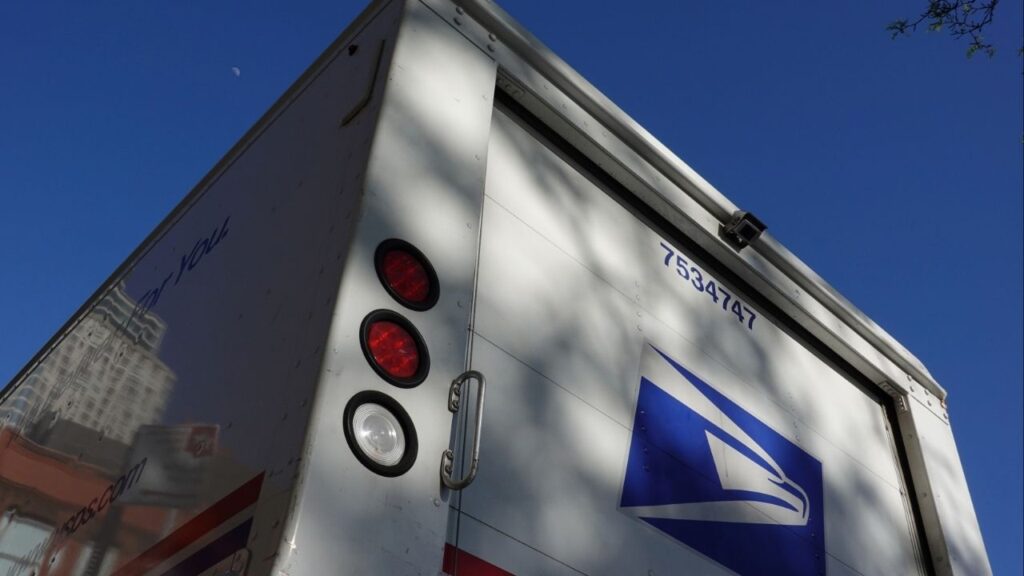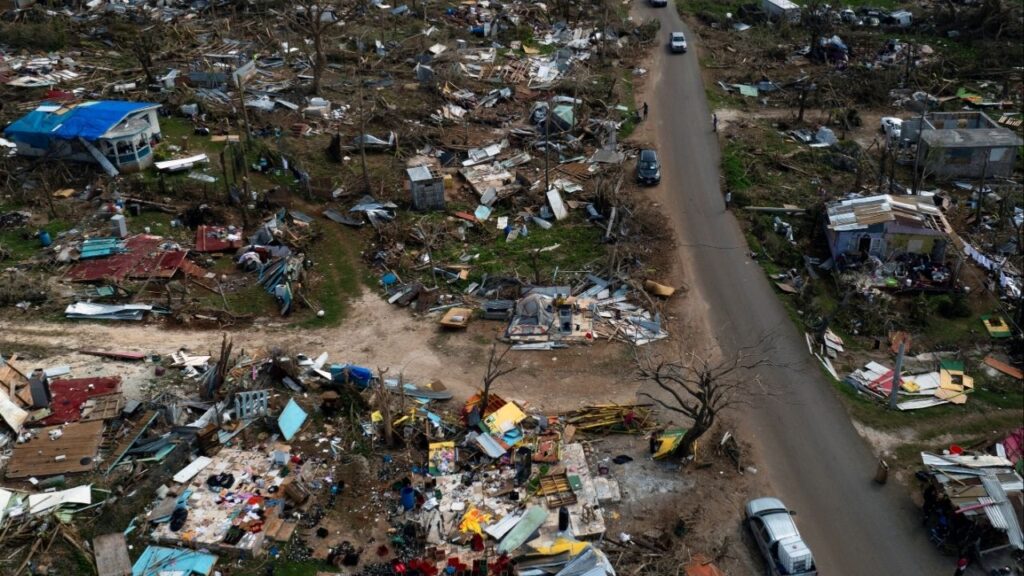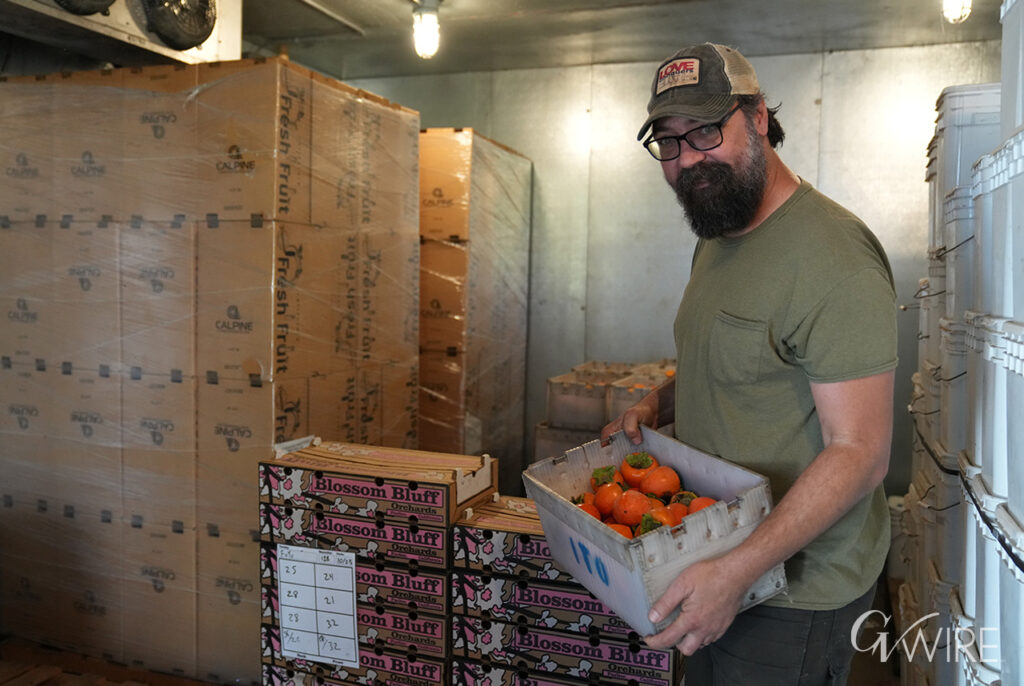An undated photo provided by NASA/Naval Research Laboratory/Parker Solar Probe shows an unprocessed image from the WISPR instrument of the comet NEOWISE on July 5, 2020, shortly after its closest approach to the sun. (NASA/Johns Hopkins APL/Naval Research Lab/Parker Solar Probe/Brendan Gallagher via The New York Times)

- NASA's Parker Solar Probe sets a record-breaking speed of 430,000 mph while exploring the sun's outer atmosphere.
- The spacecraft’s heat shield endures temperatures of nearly 2,000°F, unlocking insights into the sun’s solar wind.
- Using Venus gravity assists, Parker inches closer to the sun, revolutionizing solar science and protecting Earth from space weather.
Share
|
Getting your Trinity Audio player ready...
|
This Christmas Eve, a vehicle is traveling at incomprehensible speed around a celestial object to bring wonder to the people of Earth — and it’s not Santa’s sleigh.
On Tuesday at 6:40 a.m. Eastern time, the Parker Solar Probe, a NASA spacecraft, is passing within 3.8 million miles of the sun’s surface, more than seven times as close as any previous mission has. While surfing across the corona, the sun’s outer atmosphere, Parker was expected to surpass the incomprehensible speed of 430,000 mph, breaking its own record as the fastest object ever made by humans.
“It’s a voyage of discovery,” said Nicky Fox, associate administrator of NASA’s Science Mission Directorate. “We really are going into the unknown. Nothing has flown through the atmosphere of a star, and no other mission will for a long time.”
Since its launch in 2018, Parker has inched progressively closer to the sun during 21 solar flybys, called perihelions. The mission, a collaboration between NASA and Johns Hopkins Applied Physics Laboratory, has revolutionized our understanding of the sun, spotted comets, snapped captivating pictures and yielded insights about Venus.
Parker’s Shield Must Protect From Sun’s Heat
In addition to its scientific haul, Parker has overcome the technical challenges of flying so close to the sun that the probe’s heat shield must contend with temperatures of nearly 2,000 degrees Fahrenheit.
“We feel comfortable that the mission is doing really well, even way better than we designed it,” said Nour Rawafi, project scientist at the Applied Physics Laboratory. “But it still remains a very high-risk mission. Anything can happen at any time.”
During previous perihelions, the spacecraft traversed a region called the Alfvén surface, where the solar wind — a stream of particles emitted by the sun — escapes into space. But for its 22nd encounter, on Tuesday, Parker will fly hundreds of thousands of miles closer, slipping well below an area known as the Alfvén surface into a stellar region that has never been explored.
Going deeper into that area of the sun’s atmosphere could offer insights into the “interacting waves” that ultimately may contribute to the solar wind’s acceleration out into the solar system, said Adam Szabo, mission scientist at NASA’s Goddard Space Flight Center.
“We have just barely crossed this Alfvén point in previous encounters,” he said.
As a bonus, the sun is currently at its most active state, known as the solar maximum, raising the odds that the probe will witness spectacular pyrotechnics up close. The probe has already braved coronal mass ejections, major blowups that spew the sun’s plasma out into the solar system. The mission team is hoping for stormier solar seas that might illuminate the mechanisms that accelerate the solar wind and heat the sun’s corona.
“If the sun gives us one of these humongous explosions, like a coronal mass ejection, when Parker Solar Probe is very close to the sun, that would be fantastic,” Rawafi said.
The spacecraft will be out of contact until Friday, when Parker is scheduled to send a message back to Earth confirming its health. Assuming all goes well, the probe will transmit observations from the solar frontier over the coming months. Two more perihelions are scheduled for 2025, and Parker has enough fuel for several more years. But it will never venture any closer to the sun.
A Close Up With the Sun Is a Space Age Dream
The mission’s close-up with the sun is the culmination of a dream that dates to the dawn of the Space Age, but progress was thwarted for decades by the complexity of the task. One particular obstacle is the immense energy required to propel a probe toward the sun.
Many spacecraft use maneuvers called gravity assists, swinging by a planet or moon to increase and decrease speed. But there were unique challenges to executing those orbital interactions for this mission.
Yanping Guo, design and navigation manager for the mission at the Applied Physics Laboratory, came up with a solution in 2007: a trajectory punctuated by seven gravity assists from Venus. The mission was greenlit and eventually named after Eugene Parker, a solar physicist who predicted the existence of the solar wind in the 1950s and lived to see the launch of his namesake probe before he died in 2022 at age 94.
Barring any unforeseen accidents, the spacecraft will seek to reveal new secrets about our star. The mission has racked up breakthroughs, such as the surprise discovery of magnetic “switchbacks” that help propel the solar wind, and observations of a dust-free zone near the sun as first predicted by astronomer Henry Norris Russell in 1929.
In this way, the solar probe has opened new windows into the sun’s turbulent workings, with implications that include protecting our civilization from dangerous space weather and assessing the odds of alien life in other star systems.
And still, as Parker completes its close-up with the sun, the best may be yet to come.
Rawafi said he felt jealous of future generations that could embark on solar exploration missions much more complex than the Parker Solar Probe.
“I wish I could go back and be a kid and start all over again,” he said.
—
This article originally appeared in The New York Times.
By Becky Ferreira/Brendan Gallagher
c. 2024 The New York Times Company
RELATED TOPICS:
Categories

Why Is Ghislaine Maxwell Being Pampered in Prison?

US Strike Kills 4 on Boat Trump Says Was Smuggling Drugs

US Postal Service Seeks Reforms as It Reports $9 Billion Yearly Loss

















